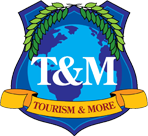Avoiding Tourism Marketing Disasters Part I
April 2014
All too often tourism professionals have taken the position that if I do not talk about a potential disaster then it will not occur. Although prayer is good for the soul, tourism is too big a business and too important to the wellbeing of too many people to leave it only to prayer. The old adage that God helps those who help themselves is not only theological but also should be the foundation for any tourism industry’s disaster avoidance plan. It is essential then that tourism professionals realize that it is their responsibility to think about all possible problems and have not only a plan to fix the problem, but also to prevent it.
Politically, the latter, prevention, is never easy. When resources are spent to measure something that did not happen, the normal tendencies of boards is to question the wisdom of the expense or to express concerns such as; “why did we spend so much money on nothing?’ Just as in the case of money spent on insurance, however, planning for a disaster is money that all tourism industries should hope is spent but never needed. Tourism marketing disasters are really two-fold. There is the actual disaster and the perception of the disaster.
This two-fold understanding of a disaster to hit the tourism industry means that not all disasters are alike. The severity of a disaster not only depends on the amount of damage to life and property, but also depends on numerous other factors, such as the timing of the disaster, the amount of media coverage that the disaster receives and the location of the disaster. For example, the closer a disaster occurs to a place that is easily accessible by the media or at a media center the more media coverage that location is bound to receive. In a like manner a beach front community facing a disaster during the busy summer season may have a harder time recovering than were the disaster to have occurred at the end of the beach season. In a like manner slow news periods tend to dwell on disaster stories for a longer time than busy news periods. The longer the story stays at the top of a new cycle the more difficult is the recovery.
To help you contemplate what might signify a tourism disaster for your community, Tourism Tidbits offers the following ideas and suggestions.
- Know your community’s tourism demographics vis-à-vis facing a disaster. Although no one wants to put him or herself in harm’s way, some demographic groups are less tolerant than others of any perceived disaster. For example, people who have an emotional tie to a particular location will “tolerate” a disaster risk to a greater extent than someone who has no emotional ties to that location. When planning for a disaster then know which groups will tend to switch locations easily and which groups will tend to stay loyal to your locale or business no matter what the situation.
- Know what your clients will respond to and what is simply a waste of time. No two tourism destinations or businesses are the same. If your tourism destination or business is built around loyal customers, then focus your attention on what keeps them loyal, if it is based on first time customers then what can you do to inspire them to return. Do not fix a problem that does not exist. A tourism disaster can come about simply because past expectations were sacrificed to change for the sake of change. Avoid disasters by creating a careful balance of the tried and true with the new.
- Create lists of your most probable potential disasters. Be fully aware of as many potential natural and manmade disasters as possible. There is always the chance that a disaster will occur that you have not considered, but the probability is that local tourism officials can predict most forms of disaster. Do you live in a place that has poorly trained police and first responders? Do you live in a seismic zone or one prone to major hurricanes or typhoons? Is there a high probability of a terrorism attack or major pandemic in your area? The key issue is to judge your situation honestly. The most dangerous situation is to be surrounded by people who do not tell you the truth or simply deny realities.
- Develop the best relationships possible with the media before a disaster strikes. To many public relations people live in a state of fear. The media respect people who tell the truth, who provide open access, and are not afraid to provide real facts. The best way to win the media to your tourism organization’s side is to demonstrate that you both form a partnership and you both understand that (1) the public has a right to know and (2) the tourism industry has a right to demand accurate and fair reporting that does not sensationalize the negative but rather accentuates the positive.
- Place your focus on your customers’ needs and not what you perceive their needs to be. Tourism is an intangible product based on emotions. You can avoid a tourism disaster by understanding who your customers and visitors are and what they want. What are you really selling and how has the “disaster” interfered with your true product? What underlying emotions are present and how can you use these emotions to prevent or mitigate a tourism disaster. Most tourism businesses have only a minimum idea of the emotions that form the basis for their business.



